Truth on Manufacturing Of Smartphones !!
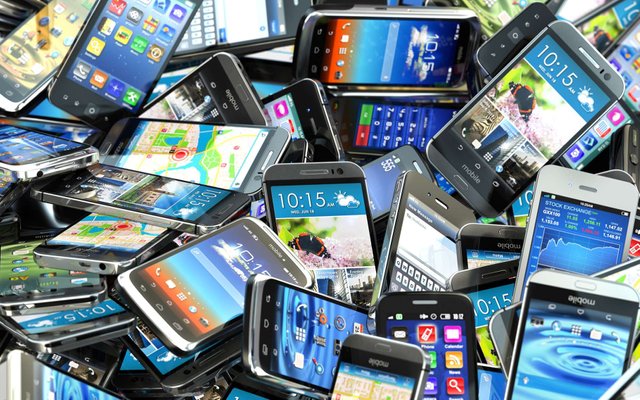
Do you have to ask a day with what materials the manufacturers build our smartphones ?.
More than seven billion smartphones have been sold worldwide for the past 10 years. Not that in 2017, nearly 1.5 billion were sold across the globe. And that should increase the next years. To make a smartphone, fifty metals are needed, including coltan, lithium, tantalum and cobalt. To extract them, the builders use mining operators around the world. But the extraction of these metals is problematic from various points of view.
Mobile phone manufacturers do not boast about it, but the metals their components need come from wildly exploited mines.
In our report that attempts to trace the stages of the life cycle of the device, from the extraction of the materials that compose it to recycling ... or illegal export channels.

 The decor
The decor
The smartphone market has completely transformed our lives. These devices have reached such a level of ergonomics, so much the everyday to simplify communication, access to information, travel and productivity in general, we almost forget their presence, entering the fibers of our behaviours.
Not so long ago, none of this existed, and our mobile phones, now called "feature" phones, only allowed us to make calls, which was fascinating at the time.
This new market has become one of the keys to the modern economy, new jobs have been created, empires have risen, and competition has raged.

The latter leads manufacturers to always want to increase their margins, and some of them try to achieve this while practicing low cost rates. This is how the inexpensive production race, whatever its moral price, develops.
the hidden secrets of our mobile phones, talk about this real cost, human and ecological, by investigating the reality behind the manufacturing of our devices, the extraction of raw materials, and the savings made in the production line supporting companies that do not hesitate to employ children.
Although our smartphones are fascinating objects, a reality today must be known to all consumers. If the suspicions about the origin of these devices already existed, that other industries had already offered us the proof of what the manufacturers are able to do to reduce the costs, and that the origin of certain components implied logically human dramas hidden, things were not concrete.
 What are our mobile phones made of?
What are our mobile phones made of?

Before our smartphones are these artificial and finalized objects that we know so well, there are obviously natural resources.
The figures concerning human consumption, especially Western consumption, are increasing in recent years, but while the information is already well known to the general public concerning resources such as arable land, the question of minerals and other materials. is less.
However, the explosion of the smartphone market has boosted the exploitation of some 40 materials, generating both soil impoverishment, the trauma of surrounding ecosystems, pollution, and endangering the lives of men working in these deposits with conditions often not complying with any safety standard, frequently on behalf of warlords for whom the sale of mined minerals allows armament.
Thus, the history of almost all smartphones circulating on the market is tainted by different human and environmental dramas, also involving the work of children at different stages of the chain.
We then discover not only that behind the low cost hiding savings made at the price of human rights, but that even the most expensive products participate in this macabre system.
Finally, these used materials are non-renewable, that is to say that our civilizations have a fixed stock of these different resources, and that there will not be any more (technically, its resources are also renewed, but their genesis is on a geological time scale and therefore negligible at the scale of civilization).
Do you know the telephone equipment you use daily? This list will break down some of the most common ingredients found in our phones ...

![]() Indium Tin Oxide (ITO)
Indium Tin Oxide (ITO)
![]() Lithium Cobalt Oxide
Lithium Cobalt Oxide
![]() Silicon
Silicon
![]() Copper
Copper
![]() Nickel
Nickel
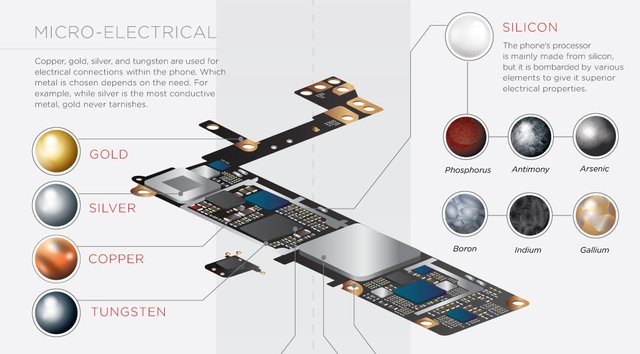
There are many other phone materials which are likely to be present in your mobile. These may include:
 Alumina
Alumina
 Silica
Silica
 Potassium Ions
Potassium Ions
 Graphite
Graphite
 Manganese
Manganese
 Aluminium
Aluminium
 Tantalum
Tantalum
 Gold
Gold
 Silver
Silver
 Tin
Tin
 Lead
Lead
 Magnesium
Magnesium
 Bromine
Bromine
These materials are toxic, ecotoxic or even genotoxic. ICT (Information and Communication Technologies) is the sector with the highest impact on the environment per unit produced. However, the demand for high technology industries (especially ICT) has tripled in the last 2-3 decades.
 Problematic Raw Materials
Problematic Raw Materials
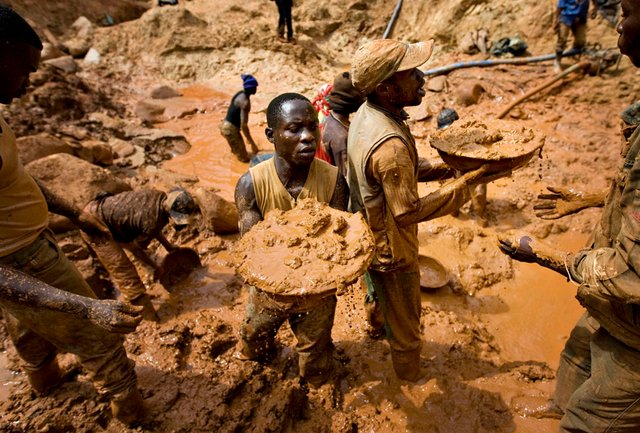
The extraction of the raw materials that go into the composition of the mobile phone raises several ethical problems. The most emblematic is the expression of "blood ores", exploited in areas of armed conflict, particularly gold, tantalum, tin and tungsten. It is estimated, for example, that 80% of the coltan reserves, where the so rare and expensive tantalum comes from, are in Africa and South-East Asia. . Their exploitation, controlled by armed groups that capture a portion of revenues to the detriment of local populations, fueling conflicts.
Conflict zones or not, raw materials are extracted by subcontractors who often do not respect the basic rules of labor law, with sometimes "disastrous" conditions for minors. Lastly, this industry is anything but durable since these resources are exhaustible, some stocks such as those of copper, silver, gold, palladium or tantalum being even in a critical state.

85% of the world's lithium resources are concentrated in Latin America, and more specifically in Argentina, Bolivia and Chile. Most of these are very arid regions, and the extraction of metals therefore requires large amounts of water. In addition, Bolivia experienced its biggest drought in 2016 for about twenty-five years. The inhabitants simply do not have water.
A good quarter of these metals are, according to some NGOs, like the Friends of the Earth, extracted from clandestine mines and conveyed by parallel circuits. Major brands of phones wash their hands naturally, claiming that this trade only concerns distant subcontractors.
 Child labor
Child labor
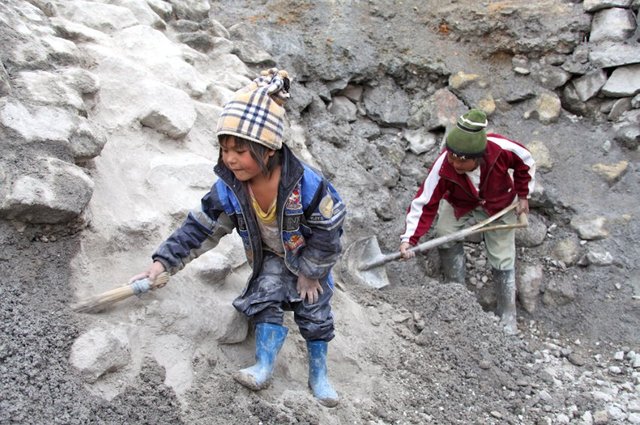
The Democratic Republic of Congo is responsible for half of the world's cobalt production. In the country, it is estimated that there are 40,000 children working for this industry in the mines. None of them go to school. And the situation should only worsen since the demand for smartphones is constantly increasing.
Child labor in mines is carried out in dangerous and unhealthy conditions exposing them to lethal injuries or diseases.
There are hundreds of child laborers in mines who die or have multiple lung diseases or other diseases.
A UN survey in the DRC indicates that between September 2014 and December 2015, more than 80 child laborers died accidentally in mines in the former province of Katanga. A number that is well below reality in that several fatal accidents are not recorded, not to mention the bodies of hundreds of children buried under the rubble.
Child labor in the mines is a terrible reality that must be pointed out.

For many manufacturers in China, Bolivia or Congo, employing children rather than adults offers some significant advantages. This allows first and foremost to have a workforce at a good price, in countries where the latter is not already expensive at the base. In addition, children are easier to control.
Thus, it is people sometimes under 13 years that we discover, work 13 hours a day, with a day off every two weeks and two holidays per year, for a salary of 150 $ per month. Few companies escape the scandal, and Huawei paid the price in a tough interview with the Cash Investigation reporter.
 "Cash Investigation" reporter denounce huawei
"Cash Investigation" reporter denounce huawei

In the investigation devoted to the manufacture of mobile phones broadcast on France 2, the show accuses the company Huawei to buy from a Chinese company in which children are employed.
According to the investigation of Cash investigation, the brand uses a factory subcontractor in China that employs children who are also subjected to particularly difficult working conditions.
The "Cash Investigation" journalists were able to interview a 13-year-old female worker working in a Chinese mobile phone screen factory. She explained that she worked 13 hours a day, often at night, 28 days a month. Among the phone brands under contract with this subcontractor, the Chinese Huawei.
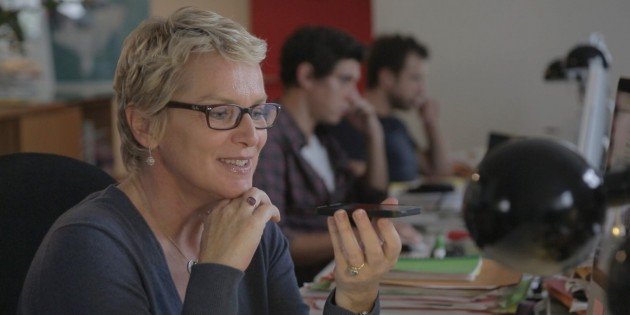
"Elise Lucet"journalist who met the president of Huawei France "François Quentin"
The teams of "Cash Investigation" have tried several times, through traditional means, to obtain explanations from the telephone company. Without success. In desperation, the presenter of "Cash Investigation", Elise Lucet, finally decided to provoke a meeting with the boss of Huawei France, François Quentin, on the occasion of a lunch in which he participated. The journalist thus melted on the leader at the end of the meal, questioning him on the working conditions in the factories of his subcontractors. Visibly surprised by the irruption of the France 2 journalist, François Quentin refused to answer his questions.
Anyway, manufacturers are in the crosshairs of the media and social networks are very active around this issue of child labor, which has however often been discussed, but now becomes very concrete. This is especially noticeable in the case of Huawei, which recently presented its investment plan in France.
It seems that there is a lot to change and we would like the subject to continue to make noise without becoming a background noise, and initiatives like the fairphone, the fair smartphone respecting human rights and the environment, become a standard of our consumer societies.
 Pollution
Pollution

The manufacture of a single device will require a total of about fifty different materials, including lithium, cobalt, tantalum and coltan, these must be transformed to obtain the components that we know, the extraction of these metals takes place in various parts of the world, and poses several important ethical, human and environmental problems.
Our smartphones, from their manufacture to the moment they are buried under a mountain of electronic waste, are a real burden for the environment. Greenpeace looked at the issue and analyzed the fate of our electronic gadgets in six different countries. A study was commissioned in six countries (United States, Germany, Russia, Mexico, South Korea and China) to better understand the expectations and behaviors of citizens vis-à-vis their smartphones: repair them? Who do they think should take charge of their recycling?
There are ten or so devices, and they are made of neodymium, the most magnetic chemical element of the periodic table. 97% of global production is located at the same location in Baotou, China.
The production of neodymium generates large quantities of waste, which is all the more dramatic as the latter are particularly harmful. Thus, each tonne of material produced produces one ton of waste and 75,000 liters of polluted water.

All of this harmful water is simply dumped into what is literally a lake of rejects, receiving 600,000 tonnes of waste annually. The consequences are very high radioactivity in the surroundings and soil contamination.
The chemical and human balance is beyond comprehension, villages are empty, water and crops are no longer edible, most people have died before the age of 40, cancers are developing and livestock shows mutations of which the origin is known, these being characteristic of fluoride poisoning, one of the many products found in the lake.
An analysis of the water extracted in these soils reveals a toxic mixture of Arsenic, Lithium, Manganese, Strontium and Sodium, Uranium levels 6 times above the norm, and sulphates 10 times higher than that. imposes European regulations.
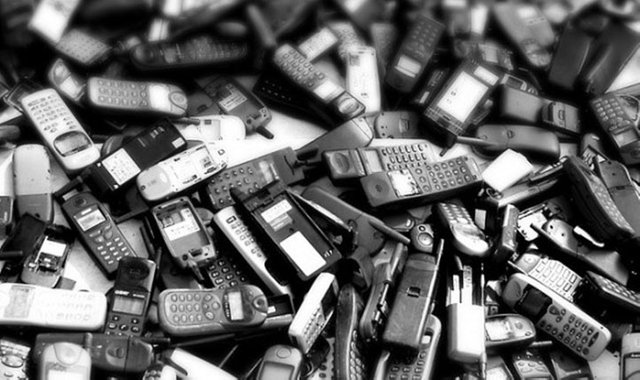
The consequence is that local hospitals are always full of cancer victims. Interviewed medical staff explained that they treat more than 700 patients in a 200-bed structure, and that 98% of them are present for cancers. For doctors, the city of Baotou is dying, with hundreds of deaths resulting from infiltration into the soils of this waste lake.
The group operating the mine and the origin of this chemical basin is called Baogang, and provides much of the smartphone industry including Sony, and even has a partnership with LG.
You can not imagine how many dangerous chemicals are involved in making your smartphone. For example, there are carcinogens such as benzene and n-hexane, as well as other substances with equally harmful effects.
Four out of five people think that smartphones should be produced without dangerous chemicals.
it seems that a majority of the population is tired of manufacturing methods that make phones so easily disposable and marketing pressure that leads us into a spiral of endless compulsive shopping. We simply want durable, easily repairable and recyclable phones that are made without hazardous chemicals and that will not end up in a landfill somewhere on the other side of the world.
 Blood in the Mobile
Blood in the Mobile

Many armed groups are fighting each other and decimating the population in Congo for the control of the minerals trade, such as coltan and cassiterite, rare minerals essential in the manufacture of our mobiles, our laptops and many other computer equipment. This conflict, the most deadly since the Second World War, has killed more than five million people and has lasted more than fifteen years! There is therefore a great urgency to inform and act.
6 million dead is 26 times the death toll of the 2010 Haiti earthquake and 26 times that of the 2004 tsunami! ... In general indifference.
The Congo's mineral resources are an immense wealth, but the money from the sale of coltan is invested in the arming of armed groups instead of benefiting the population to meet its most basic needs, which obviously concern schooling. health, diet ...



@originalworks
The @OriginalWorks bot has determined this post by @aek081969 to be original material and upvoted it!
To call @OriginalWorks, simply reply to any post with @originalworks or !originalworks in your message!
Nice story about the smartphone which stays in our hand more than we want to
Great man
Keep writing stories like this
شكرا للمشاركة الجميلة و المعلومات المفيدة!
حصلت على تصويت من
@arabsteem curation trail !
و تم اختيار مقالتك ضمن مقالات يومية مختارة للنشر اليوم في مقالنا! :)
شكرا لكم... تمنياتي للجميع التوفيق و النجاح
@aek081969 payed 1.2 SBD to @minnowbooster to buy a stealth upvote.

transaction-id bceca48288944a67a898f3cd59e98f06841a4d52
@stealthgoat
Congratulations @aek081969! You have completed some achievement on Steemit and have been rewarded with new badge(s) :
Click on any badge to view your own Board of Honor on SteemitBoard.
For more information about SteemitBoard, click here
If you no longer want to receive notifications, reply to this comment with the word
STOPYou got a 0.25% upvote from @upme requested by: @aek081969.
Send at least 1.5 SBD to @upme with a post link in the memo field to receive upvote next round.
To support our activity, please vote for my master @suggeelson, as a STEEM Witness
@aek081969 upvoted
مرحبا @aek081969
قمت بإرسال 0.7 سبد وحصلت على 3.0٪ كتصويت مفيد،
وذلك بفضل @starupvote
وشكرا للأخ @aek081969
وتحصل على 1.66 دولارتم إرجاع إليك رصيد 0.053 سبد
نتمنى لكم التوفيق والنجاح.
Hi @aek081969
you sent 0.7 SBD and you got a 3.0% @starupvote upgoat, thanks to @aek081969
It consists of $1.66 vote
It was returned to you balance 0.053 SBD
We wish you good luck and success.